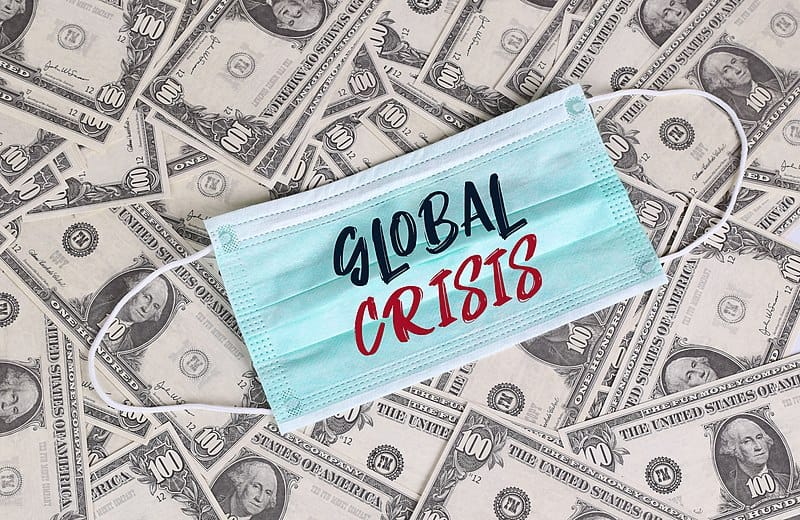The lead economist at one of China’s big state-owned banks says Beijing should adopt a range of contingency measures to prevent the spillover effects of another global financial crisis, following heightened trepidations over the collapse of Silicon Valley Bank (SVB) and Credit Suisse.
Monetary policy makes Western financial system vulnerable to crisis
In an opinion piece published on Sina, Guan Tao (管涛), chief global economist at Bank of China (BOC) International, writes that while US and EU regulators have successfully managed to contain the impacts of the SVB and Credit Suisse collapses, the Western financial system still remains vulnerable to systemic crisis given monetary policy setting on both sides of the Atlantic.
“The European and American banking industry is in turmoil,” Guan writes. “Both the US and Swiss regulatory authorities have taken some measures that, to a certain extent, help to curb the spread of risks in the short-term. However, the root causes of risks have not been eliminated.”
Guan points out that as long as US and EU central banks continue to tighten in order to deal with stubbornly persistent levels of inflation, certain lenders will be vulnerable to bank runs as the lustre of money market funds becomes more appealing.
“For many depositors, it is difficult to refrain from transferring deposits if they can obtain returns of 3% to 4% from money market funds,” Guan writes. “For this reason, the pressure on banks still exists.”
This problem has become more acute in the US after the Covid pandemic, given the expansion of savings induced by protracted lockdown measures.
“Recently, some university professors in the United States have calculated that during the crisis period bank deposits have grown rapidly.
“However, the amount of deposits that are not protected by deposit insurance has increased by 41% compared to the end of 2019. If there is a run on banks, there are 186 small and medium-sized banks at risk of going bankrupt.”
The prices for financial assets across the board will come under pressure as interest rates continue to rise, which will also put pressure on shadow banks in addition to traditional depository institutions.
“Under conditions of monetary tightening, asset prices will not perform well in the short term,” Guan writes. “The adjustment of asset prices has not yet ended. In fact, before the Silicon Valley Bank incident occurred, the Federal Reserve was concerned not about the risks of financial stability, but about the overvaluation of asset prices. The minutes of the 1 February meeting released by the Federal Reserve on 23 February clearly stated that both real estate and stock market valuations remain at high levels.
“While some adjustments were made last year and risk assets began to rebound at the end of the year, overall, the outlook is not optimistic.
“A stock-bond balanced strategy had a negative return of 17% last year, and the return for the first two months of this year was only 2.7%, still lower than the short-term US Treasury bond yield. Therefore, prudent investors will choose to hold these risk-free assets rather than invest, which will still put pressure on shadow banks such as hedge funds.”
Because of the high asset prices and leverage levels created by long-term low interest rates in the years following the Great Financial Crisis, Guan argues that current Federal Reserve chair Jerome Powell faces even greater challenges than Paul Volcker, who headed the Fed during the worst period for US inflation in modern history at the turn of the 1980’s.
“When monetary policy is loose, financial asset prices rise sharply, but the negative impact of their decline is greater than the impact of their rise,” Guan writes.
“Currently, Powell faces greater challenges than Volcker did back then. Volcker did not face high leverage or asset bubbles. He had to choose between promoting growth or maintaining price stability, so he paid the price of two years of economic recession with high interest rates, and reduced inflation from double digits to single digits.
“This time, Powell faces a triple dilemma: he must stabilize prices, maintain growth, and stabilize the financial system. Financial asset prices are overshooting, so attention must be given to their area. Moreover, the derivation of financial risk into financial crisis is nonlinear, and linear methods are often prone to miss out on nonlinear crises when predicting them.”
The EU and US financial systems are also vulnerable to the type of negative feedback effect described at length by former Fed governor Ben Bernanke.
“Piartuclalry considering the turmoil in the European and American banking industry, if banks contract credit, it will increase the pressure on economic adjustment and have a greater impact on certain specific sectors,” Guan writes.
“For example, nearly 70% to 80% of loans for commercial real estate in the United States now come from small and medium-sized banks. If small and medium-sized banks contract credit, commercial real estate prices in the United States will further see further adjustments.”
China needs to prepare for a Western financial crisis
Guan says that China has becoming increasingly vulnerable to the spillover effects of another financial crisis in the West, due to ongoing efforts to open up its financial sector.
“Since 2008, China has accelerated the two-way opening of finance, and the absolute size of foreign financial assets and liabilities and their ratio to GDP have increased significantly.
“This international economic and financial turmoil caused by overseas radical tightening is a big test for our efforts to expand financial openness and maintain financial security.
“Last year, the spillover impact of the US Federal Reserve tightening on China was mainly through financial shocks, mainly affecting China through the financial market and cross-border capital flows. This channel of impact continues to exist this year.
“In the history of US Federal Reserve tightening, economic recessions and financial crises occur frequently. Even though the probability of a crisis occurring can be estimated in various ways, it is more important to prepare for adverse situations with contingency plans rather than predictions.
“We need to prepare in advance for the worsening of the external economic and financial environment and study in advance whether to use fiscal or monetary policy tools to hedge against the risk of external shocks. We must maintain the flexibility of exchange rate policy and fully utilize the exchange rate as a ‘shock absorber’ to absorb internal and external impacts.”
Guan points out that changes in the nature of the financial sector due to Internet-drive fintech innovations can abet the spread of risk, and necessitate changes to regulatory solutions.
“The Asian financial crisis of 1998 was the first crisis encountered in the era of globalization, and the current crisis may be the first financial crisis in the era of information technology. Credit Suisse mentioned that one of the key reasons for its failure was that information spreads too fast now, and depositors and investors can withdraw their money quickly.
“The crises at Silicon Valley Bank and Credit Suisse to some extent are crises that are self-reinforcing and self-realizing in the era of information technology, which raises new and higher requirements for liquidity management and crisis handling of financial institutions and financial regulatory departments.
“We should re-evaluate the current mechanism for dealing with financial risks and crises and improve policy response capabilities.”
In addition to actions on the part of Chinese regulators, Guan also highlighted the need for private market actors to adopt precautionary measures to forestall spillover risks originating in foreign markets.
“State and government authorities can be the only ones responsible for identifying foreign financial risks – [responsbility] must be borne by market entities themselves.
“Foreign trade enterprises need to strengthen their management of exchange payment risks for imports and exports. Financial institutions, especially large banks and sovereign wealth management institutions, need to screen counterparty risks and avoid excessive reliance on external credit ratings.
“All institutions and enterprises need to understand their foreign financial asset and liability bases and actively maintain the safety of foreign financial investment and financing.”




